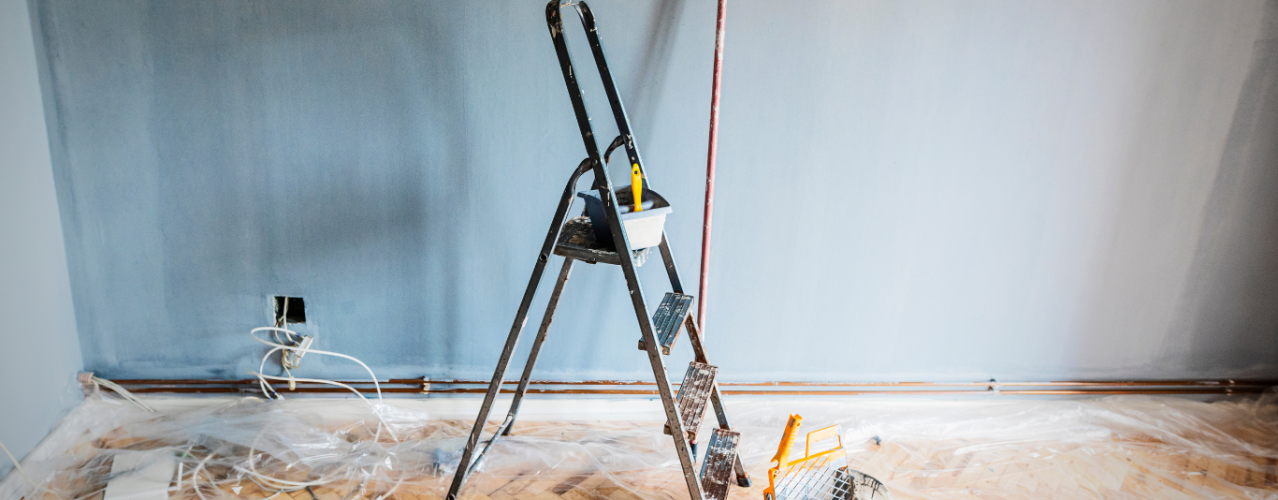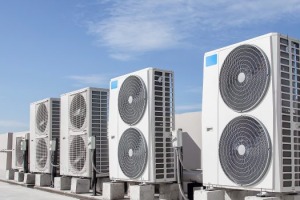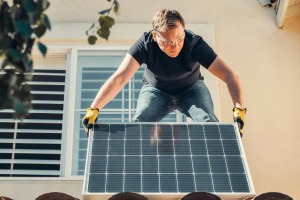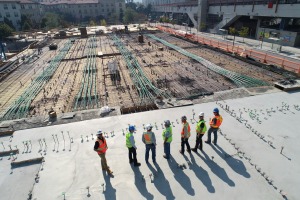


News I published 03 March 2021
The rise or fall of DIFM in home improvement?
The drivers behind more DIFM
During the last couple of years, or until 2019, to be more precise, there was a slow but gradual shift towards more DIFM in the total number of home improvement jobs done in Europe. In 4 years, the share of DIFM jobs increased from 33.5% to 37.5%. The key drivers behind this mainly revolve around age.
On the one hand, the population in Europe is ageing. There are significant differences between the countries, but an overall conclusion can be drawn. The baby boom generation is increasingly faced with home improvement jobs that need to be done, but they are no longer willing or capable of doing these jobs themselves. As this age group represents both a large group within the demographic build-up of European society and a group that used to be avid and experienced DIYers, they are contributing to the shift towards more DIFM.
On the other hand, we have a younger generation (millennials) who are traditionally less DIY-savvy (both in terms of DIY experience and confidence) and are more often renting their house instead of owning it (thus doing less in terms of home improvement). Furthermore, they tend to value and invest their time in a wide variety of activities, but not so much in DIY jobs. This age group is also contributing to the shift to more DIFM jobs instead of DIY jobs.
The drivers towards more DIY
Up until 2018, our data coming from the European home improvement monitor (a survey among 26,400 European consumers in 11 countries) supported both the story above and the trend towards more DIFM. However, in 2019, we see that the shift towards more DIFM has halted, and in fact, the share of DIFM has decreased. Is this just an anomaly? A year in which, for some reason, fewer jobs were outsourced? I do not think so, as there are also drivers towards more DIY.
First and foremost, it is all about the costs. In this case, labour costs. In the years before 2019, we have seen the wages for labour in the construction and installation market steadily increase. It is basic economics. On the one hand, we see a higher demand for professionals working in the construction and installation market (serving both the B2B and B2C markets). On the other hand, the availability of labour did not increase, and in many (mainly Northern European) countries, it decreased due to severe shortages of labour in the construction and installation markets.
So the cost of labour increased, which had a dampening effect on the share of DIFM and a positive effect on the share of DIY in the total. There is another aspect that encouraged more DIY jobs related to higher costs and lower availability of professionals. This is the time consumers sometimes had/have to wait for the professional to start working on their job.
The impact of corona
So we can discuss the drivers and barriers towards more or less DIFM. I believe that in 2019, the pivotal moment was reached where demand and supply were no longer in balance. This could have more or less sorted itself out. We see that many companies want to jump into this market segment. From DIY retail chains offering installation services to more Eastern European workers and local semi-professionals (white van guys) offering their services,. But we saw the share of DIFM drop even further in 2020 (and this is also expected for H1 2021).
Despite a booming home improvement market in many European countries, driven by the fact that consumers had more time, budget, and the need to improve their homes, the coronavirus outbreak had a further negative impact on the share of DIFM. One of the key drivers for this further drop was the outbreak of the coronavirus crisis and, consequently, the hesitance of consumers to have professionals conducting home improvement jobs in their houses. In January, 50% of European consumers still stated that they would rather postpone DIFM jobs if possible due to the corona crisis. Now obviously, this is their sentiment. If they want the job to be done badly enough, they will still hire professionals. Also, not all jobs are suitable for DIY, so in some cases they cannot avoid hiring professionals (think of plumbing, tiling etc).
The future
So now for the key question: what will happen in the future? Well, this is very much dependent on the same drivers we discussed earlier. It is mostly a question of which side the pendulum will swing. Will the construction and installation industry be able to solve (or partially solve) the labour shortage? Or will the growing interest of DIY chains and semi-pros in DIFM jobs turn out to be a success? Then the labour cost would decrease and the availability would increase, leading to the continuation of more DIFM.
If the industry is not able to solve this issue, we will not see a rise in DIFM, or we could see the increase in DIY jobs continuing. Especially as a broader audience than normal experienced doing DIY jobs, and in many cases, both improved their DIY skills and enjoyed doing the jobs much more than in the pre-corona situation.
I expect that the share of DIFM will remain under pressure, as I do not see the labour issues being sorted out any time soon. The construction industry is going through the coronavirus crisis relatively well, and the demand for professionals will remain high. That being said, I do not think the share of DIFM will drop very significantly either, as more and more parties are seeing the potential for the DIFM market and are coming up with interesting initiatives. The age pyramid of European society will also not forever lean more heavily towards the older generation, thus creating more balance in the demand and supply for DIFM.

Read more about the subject


18 July 2024 I Dirk Hoogenboom
Willingness to invest of European consumers in sustainability improvements of their houses lower in 2024 than in 2023


02 July 2024 I Dirk Hoogenboom
BIM adoption among European HVAC installers remains low


06 June 2024 I Maja Markovic
Sustainability in the electrical installation sector; slow but steady growth


06 June 2024 I Dirk Hoogenboom
Trends in construction material usage

Fresh Insights Await
Our latest reports
Delve into the newest findings across various market segments, crafted for a cutting-edge overview. Explore our latest reports, brimming with up-to-date data, trend analyses, and in-depth examinations, all tailored to provide you with a comprehensive understanding of the current market dynamics.
Construction
Home Improvement
Installation
Construction
Trends in material usage Q1 2024
2024 102 pages
Explore the evolving trends in material usage among European architects in Q1 2024. Delve into the factors driving material preferences and the impact on construction aesthetics and sustainability.
1,850 Euro
Construction
Media orientation H2 2021
2024 161 pages
Explore the media engagement patterns of contractors to optimize your marketing strategies. Dive into a pool of insights that unveils how contractors interact with different media channels.
6,300 Euro
Construction
European Green Deal Q4 2021
2024 88 pages
Explore the impact and reception of the European Green Deal among architects. Understand how the initiative is influencing architectural practices and sustainability measures.
1,850 Euro
Construction
BIM Q4 2023
2024 246 pages
Key insights regarding the BIM usage and behaviour of European architects, and our latest future building volumes prognoses
1,850 Euro
Construction
Purchase Channels H2 2023
2024 123
Explore the buying and ordering behaviour among contractors in H1 2023. Uncover the key channels used, share-of-wallet and much more.
6,300 Euro
Construction
Behavioural segmentation and media usage report 2023
2023 75 pages
This report provides a comprehensive overview of purchase behaviour, products, and media usage, specifically focusing on European handymen. It delves into how handymen use media, and for what purposes, and examines their habits and preferences in terms of purchasing behaviour.
8,400 Euro
Home Improvement
DIY versus DIFM Q4 2021
2024 113 pages
This report is a must-have if you’re in the home improvement industry. It provides a wealth of information on the behaviour of DIY and DIFM consumers, their motivations, and the factors that influence their purchasing decisions.
3,150 Euro
Home Improvement
DIY or DIFM Q4 2023
2024 70
Explore the prevailing trends between DIY and DIFM in Q4 2023. Understand consumer preferences and the factors influencing their choice between DIY and DIFM.
3,150 Euro
Home Improvement
Branding Q3 2023
2023 93 pages
This report offers an extensive overview of the home improvement industry, with a focus on branding and the most popular brands within different categories. Within this report, you will gain insights into how customers perceive home improvement brands and what motivates them to buy certain products.
3,150 Euro
Home Improvement
Purchase channels Q2 2023
2023 114 pages
The European Home Improvement Monitor offers valuable insights on purchase channels in the European home improvement industry, examining the evolving preferences and behaviors of consumers across traditional retail and emerging online platforms.
3,150 Euros
Home Improvement
Purchase Channels Q2 2022
2022 124 pages
Uncover the prevalent purchase channels in the home improvement sector during Q2 2022. Delve into consumer preferences and the factors influencing their purchasing decisions.
3,150 Euro
Home Improvement
Do-it-yourself or do-it-for-me Q4 2022
2022 93 pages
Explore the prevailing trends between DIY and DIFM in Q4 2022. Understand consumer preferences and the factors influencing their choice between DIY and DIFM.
3,150 Euro
Installation
Smart & Connected Products Q2 2024
2024 120 pages
This report provides a comprehensive view of the attitudes of installers toward smart building solutions, specifically among electrical installers and their clients. In the report, you will find insights into the installers' experiences with installing smart products and the willingness of end users to invest in such solutions, as well as their motivations and pain points.
3,150 Euro
Installation
Sustainability Q1 2024
2024 81 pages
Delve into sustainability trends in the home improvement sector in Q1 2024. Discover consumer preferences and the shift towards eco-friendly home improvement solutions.
3,150 Euro
Installation
BIM Q1 2024
2024 84 pages
The European Mechanical Installation Monitor report provides a detailed analysis of the plumbing and HVAC industry. This report specifically focuses on BIM adaptation in the industry.
2,650 Euro
Installation
Sustainability Q1 2024
2024 99 pages
The European Electrical Installation Monitor report provides a detailed analysis of the sustainable solutions in the installation industry. This report specifically focuses on sustainability aspects in the industry.
3,150 Euro
Installation
Challenges toward sustainable future Q4 2021
2024 111 pages
2,650 Euro
Installation
Purchase channels Q4 2021
2024 106 pages
Delve into the training needs within the electrical installation sector. Understand the areas requiring skill development to meet the evolving demands of the industry.
3,150 Euro








